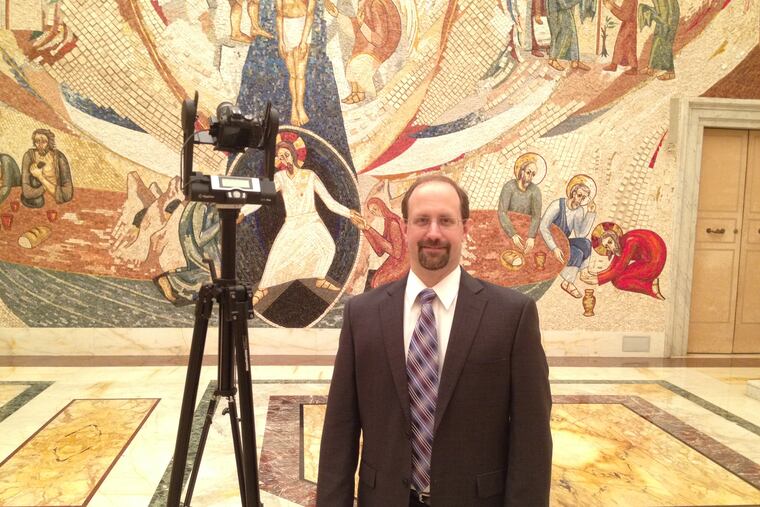Villanova creates virtual tour of chapel used exclusively by the pope
A Villanova University team creates a virtual reality tour of a Vatican spot that has been largely inaccessible to the public, a special chapel used exclusively by the pope.

Since 2009, Villanova University professors and student interns have gone to the Vatican to create virtual tours of the holiest of spaces, including the Sistine Chapel, the Basilica of St. John Lateran, and the Basilica of St. Peter.
Their latest project, three years in the making, takes viewers inside the Redemptoris Mater Chapel, used exclusively by the pope for prayer and special Masses for small groups.
Located on the second floor of the Apostolic Palace in Vatican City, the small chapel, with its beautiful mosaic-covered walls and ceiling, has been largely inaccessible to the general public, and was photographed by the Villanova computer science faculty and students with rare permission.
“The first time you go in there, you realize this is a historic place,” said Frank Klassner, a computer science professor who led the project. “The weight of the history comes on you when you realize that the pope has met lots of dignitaries and held lots of private audiences and services there.”
Formerly known as the Matilde Chapel, the space was remodeled under Pope John Paul II and reopened in 1999.
It is the seventh site that Villanova professors and students have brought into 3D view for Catholics and others around the world. The tours are posted on the Vatican’s website.
An earlier 3D tour of the chapel was posted on the Vatican website in 2005, but Villanova’s new production — made with updated technology — is now featured on the site.
The team of Klassner and two students took 800 digital photographs of the chapel with a motorized camera rig. The photos were digitally stitched together, color-corrected, and post-processed, Klassner said, to create “a cubic panorama file” of the chapel. It was tedious work.
Viewers can zoom in on the areas of each mosaic and read passages about their theological significance.
The chapel’s mosaics resemble early Byzantine religious artwork and were made with millions of small fragments of stone from “caves with prehistoric paintings to seaside beaches and riverbanks,” the university said.
Klassner and the student interns — Zachary Rahn and Albert Hermida, who have both since graduated — visited the chapel three times for a total of about 15 hours, and on each visit were amazed at its intricate beauty, said Klassner, who also directs Villanova’s Center of Excellence in Enterprise Technology. It made for a great learning experience for the two students on the project, he said.
“Most of the time, computer science students work with data already collected,” he said. “This time they were involved from the collection phase all the way to the final presentation of the project.”
Villanova has sent interns to the Vatican since 2003. The virtual tour project that began nearly a decade ago was proposed by Villanova professors and embraced by Vatican officials looking for a way to interact better with the world via a website and to bring the spaces to a wider audience than those who visit Rome.
Klassner’s next project? Creating a virtual tour of Castel Gandolfo, the summer residence of the popes. It’s in the planning phase, he said.
“From a computer science standpoint, there will be a lot of challenges,” he said, noting that some rooms don’t have windows or much lighting. “So we will have to be creative.”